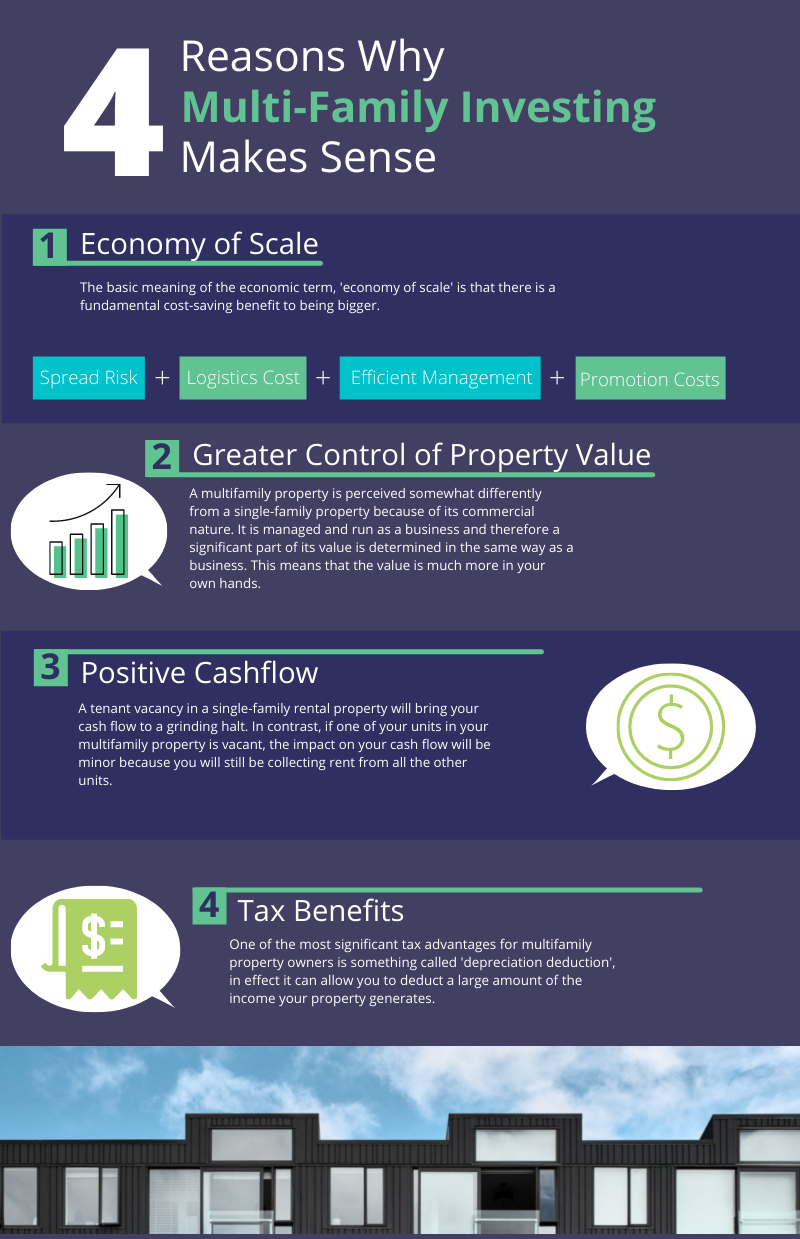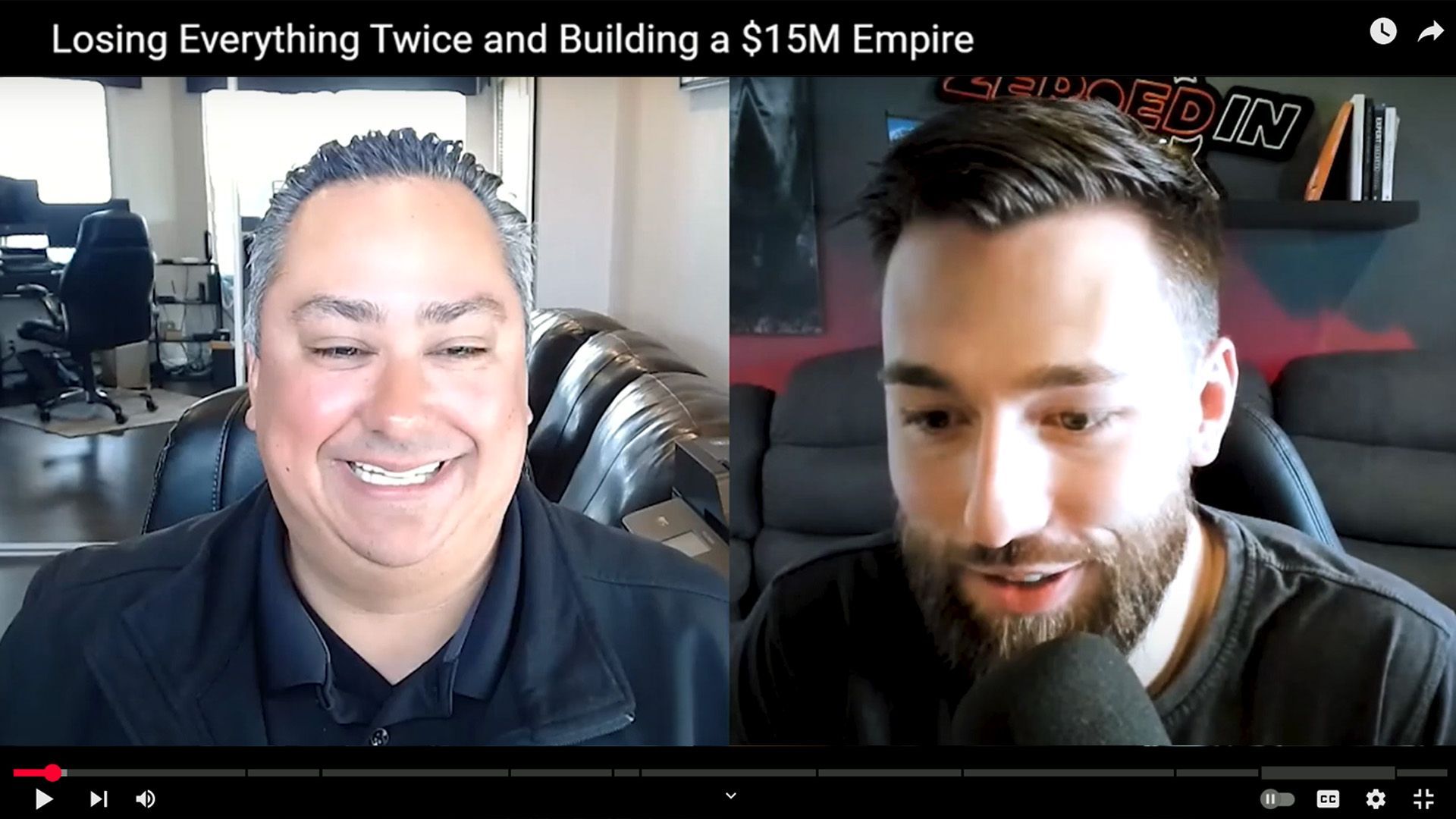Why Multifamily Investment Makes Sense

Multifamily Market Overview
The demand for rental accommodation continues to significantly outpace supply. The current status quo is that rental housing supply is falling short by hundreds of thousands of units each year across the United States. This situation, according to The National Multifamily Housing Council and The National Apartment Association, looks set to continue for many years to come.
Current demographic preferences reveal a trend at both ends of the age spectrum for renting as opposed to owning. The younger demographic are finding it more challenging to get the financing for property ownership and the baby boomer generation favor downsizing and the increased freedom that allows. The result is that the demand for rental property is increasing.
The combination of these two market factors gives a strong positive indication for sustained revenue growth in the multifamily sector. The conditions look set to remain positive for multifamily investment in most locations for the foreseeable future.
Let’s take a look now at four more reasons why investing in multifamily makes good financial sense.
#1 Economy of Scale
The basic meaning of the economic term, ‘economy of scale’ is that there is a fundamental cost-saving benefit to being bigger.
To quote Investopedia, an ‘economy of scale’ is an advantage “that arises with increased output of a product. Economies of scale arise because of the inverse relationship between the quantity produced and per-unit fixed costs.”
How does this concept apply to the argument that multifamily investing is more advantageous than investing in single-family property?
To give a simple example, if you have been collecting 10 rents for 12 months from your multifamily property and then the roof needs fixing, that’s a much better scenario than collecting 1 rent for 12 months on your single-family property and then the roof on it needs fixing.
The rationale applies even more if you add more single-family properties to the equation. The cost of managing 10 individual properties, which could be spread across multiple states, and the cost of hiring different contractors to care for each one would be punitive. The cost would be much greater and the management less efficient and less cost-effective than caring for one multifamily property of 10 units in one geographic location.
#2 Greater Control of Property Value
With a single-family property, you are almost completely at the mercy of market forces.
If you need to sell in a down market your hands will be relatively tied. The value of your property will be determined by what other properties have sold for in the local area at that time.
A multifamily property is perceived somewhat differently because of its commercial nature. It is managed and run as a business and therefore a significant part of its value is determined in the same way as a business. This means that the value is much more in your own hands.
Businesses are valued largely on their profitability and, in a similar way; a multifamily property’s value is determined by its net operating income.
Something as straightforward as adding a laundry facility or some paid parking are two examples that can very positively affect the profitability of your multifamily property and in turn, its value.
With a multifamily property, there are many more ways that you can bring your management and entrepreneurial skills to bear to increase the value of the property independently of the surrounding property market.
In a nutshell, you have the ability to raise the value of your multifamily property by decreasing expenses and increasing income.
#3 Positive Cashflow
In addition to the ideas mentioned previously, namely, adding laundry facilities and paid parking, there are lots of amenities that could be added to your multifamily property to keep a positive cash flow.
In addition, the old adage of not having all your eggs in one basket applies here also. A tenant vacancy in a single-family rental property will bring your cash flow to a grinding halt. In contrast, if one of your units in your multifamily property is vacant, the impact on your cash flow will be minor because you will still be collecting rent from all the other units.
#4 Tax Benefits
One of the great things about supplying housing for the populace is that in doing so you are helping the government fulfill one of their important responsibilities. Not surprisingly, in return, the government offers you certain tax advantages.
One of the most significant tax advantages for multifamily property owners is something called ‘depreciation deduction,’ in effect it can allow you to deduct a large amount of the income your property generates. For details on how it works, take a look at the following Investopedia article, How Rental Property Depreciation Works.
Another way multifamily property tax laws benefit you is that you are permitted to use some of the cash flow from the property itself to pay down the mortgage.
It is permissible to collect revenue but show a much smaller amount of income on your taxes. This allows you to take a portion of that rental income and use it to pay down your debt on the property, which will steadily increase the equity.
With the help of a good tax advisor, you may find that there are many other legitimate ways to capitalize on the tax deductions and incentives and even grants that the government makes available to multifamily property owners.
Summary
In the present fluctuating economic climate multifamily properties are tangible assets that represent a sound focal point for your investment and wealth creation strategy.
Due to shorter lease terms that give room for regular increases in rent, multifamily assets represent less of a risk than other commercial real estate investments.
The prevailing demographics are also favorable. The steady increase in the number of professionals in the workplace, families, and empty nesters looking to downsize and simplify their lifestyle means that focusing on the multi-family market makes sense.
Multifamily is and will continue to be a solid strategy for investors looking to achieve financial freedom by means of strong investment returns that are attractively low risk.
*A 506(c) for accredited investors only.
This information is authorized for use only by a limited number of persons with an existing relationship with the sponsors and who have been qualified and accepted as an investor by the sponsors. Neither the Securities and Exchange Commission nor any state securities commission has approved or disapproved of the real estate interests in this property package or passed upon the adequacy or accuracy of this document. Any representation to the contrary is a criminal offense.The views and opinions expressed in this presentation are those of the sponsors and are subject to change based on market and other conditions. Although the information presented here in has been obtained from and is based upon sources the sponsors believe to be reliable, no representation or warranty, expressed or implied, is made as to the accuracy or completeness of that information. No assurance can be given that the investment objectives described herein will be achieved. Reliance upon information in this material is at the sole discretion of the reader.This data is for illustrative purposes only. Past performance of indices of asset classes does not represent actual returns or volatility of actual accounts or investment managers and should not be viewed as indicative of future results. The investments discussed may fluctuate in price or value. Investors may get back less than they invested or nothing at all.
Forward looking information contained in these materials is subject to certain inherent limitations. Such information is information that is not purely historical in nature and may include, among other things, expected structural features, anticipated ratings, proposed or target portfolio composition, proposed diversification or sector investment, specific investment strategies and forecasts of future market or economic conditions. The forward-looking information contained herein is based upon certain assumptions, which are unlikely to be consistent with, and may differ materially from, actual events and conditions. In addition, not all relevant events or conditions may have been considered in developing such assumptions. Accordingly, actual results will vary, and the variations may be material. Prospective investors should understand such assumptions and evaluate whether they are appropriate for their purposes. These materials may also contain historical market data; however, historical market trends are not reliable indicators of future market behavior. This material does not constitute an offer or a solicitation to purchase securities. An offer can only be made by the private placement memorandum. This document is an informational summary and is authorized for use only by accredited investors ONLY. If you do not qualify as an Accredited Investor, you are prohibited from participating in this opportunity and you are required to return these materials to the Sponsor.






